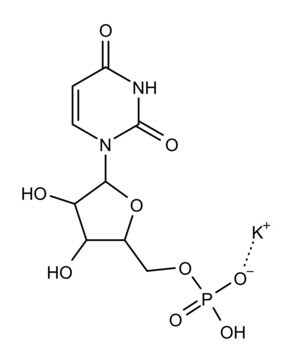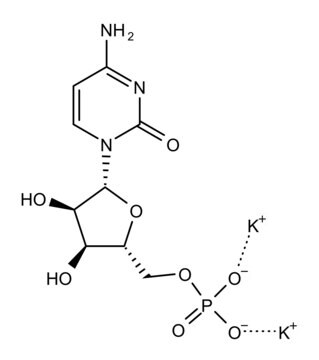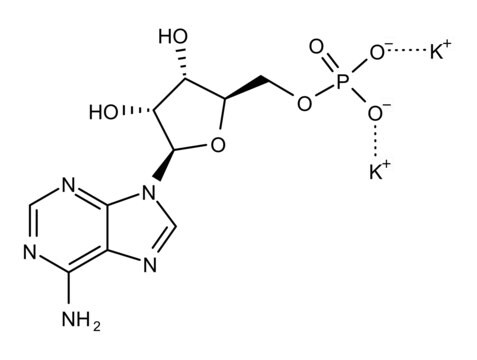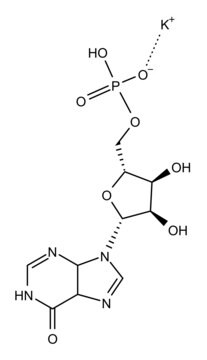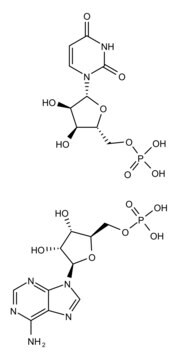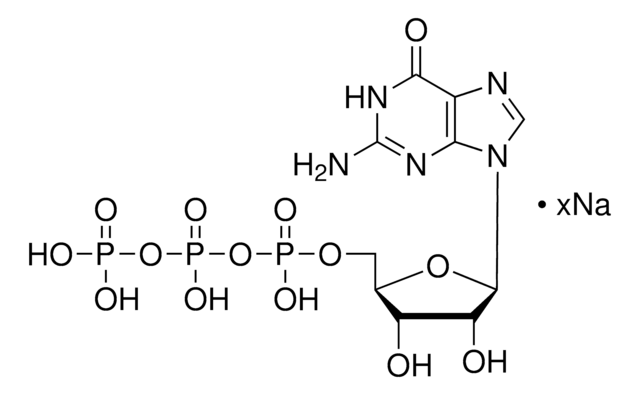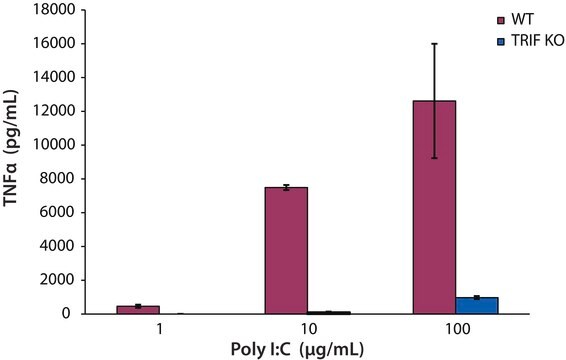추천 제품
일반 설명
Polyguanylic acid takes up a four-stranded helical structure. It is synthetically produced in Thermus thermophilus from guanosine diphosphate (GDP) and its synthesis is catalyzed by the enzyme polynucleotide phosphorylase.
애플리케이션
Polyguanylic acid (PolyG) is used to study the effects of ionizing radiation on formation and stability of G-quadruplex structures and as a target molecule for physicochemical studies of electronic excitation (vibrational spectra) of guanosine.
Polyguanylic acid potassium salt has been used:
- as a ligand for surface neuropilin-1 (NRP1) for internalization studies
- for intercalation studies with trisubstituted and disubstituted triazole-linked phenyl derivatives CL41, CL42 and CL2r50 using voltammetry method
- as a synthetic polynucleotide for agarose gel electrophoresis analysis
생화학적/생리학적 작용
Polyguanylic acid acts as a ligand for scavenger receptor and reduces the surface expression neuropilin-1 in endothelial cells.
제조 메모
Prepared from GDP using polynucleotide phosphorylase
Storage Class Code
11 - Combustible Solids
WGK
WGK 3
Flash Point (°F)
Not applicable
Flash Point (°C)
Not applicable
개인 보호 장비
Eyeshields, Gloves, type N95 (US)
시험 성적서(COA)
제품의 로트/배치 번호를 입력하여 시험 성적서(COA)을 검색하십시오. 로트 및 배치 번호는 제품 라벨에 있는 ‘로트’ 또는 ‘배치’라는 용어 뒤에서 찾을 수 있습니다.
이미 열람한 고객
Venugopal Karunakaran et al.
Journal of the American Chemical Society, 131(16), 5839-5850 (2009-04-04)
Guanosine monophosphate (GMP) in aqueous solutions has been studied with femtosecond broad-band transient absorption spectroscopy and by quantum-mechanical calculations. The sample was excited at 267 or 287 nm and probed between 270 and 1000 nm with 100 fs resolution, for
Zhong-yuan Kan et al.
Nucleic acids research, 35(11), 3646-3653 (2007-05-10)
Chromosomes in vertebrates are protected at both ends by telomere DNA composed of tandem (TTAGGG)n repeats. DNA replication produces a blunt-ended leading strand telomere and a lagging strand telomere carrying a single-stranded G-rich overhang at its end. The G-rich strand
Picosecond infrared probing of the vibrational spectra of transients formed upon UV excitation of stacked G-tetrad structures.
McGovern DA, Quinn S, Doorley GW, et al.
Chemical Communications (Cambridge, England), 28, 5158-5160 (2007)
D Grygoryev et al.
Radiation research, 173(1), 110-118 (2010-01-01)
The ability of guanine-rich sequences to form quadruplex structures in telomeres for example is important in a number of biological processes such as aging, carcinogenesis and gene regulation. Ionizing radiation can cause damage to guanine moieties that can affect the
A study of the pH dependence of electronically excited guanosine compounds by picosecond time-resolved infrared spectroscopy.
McGovern DA, Doorley GW, et al.
Photochemistry and Photobiology, 8, 542-548 (2008)
자사의 과학자팀은 생명 과학, 재료 과학, 화학 합성, 크로마토그래피, 분석 및 기타 많은 영역을 포함한 모든 과학 분야에 경험이 있습니다..
고객지원팀으로 연락바랍니다.